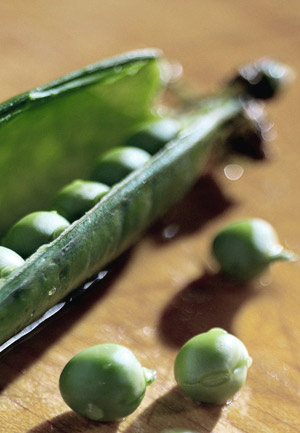|
|
Ascochyta (Mycosphaerella pinodes) is a fungus that occurs in processing pea crops. The processing pea industry is highly competitive with imports from New Zealand placing economic pressure on producers to continually improve their management practices to remain viable against cheaper imported product. The production areas of Tasmania and southwest Western Australia are further disadvantaged by having a growing season confined to winter and spring rather than the usual spring and summer season found overseas. These growing conditions provide a very high incidence of the Ascochyta fungus (Mycosphaerella pinodes), particularly in Western Australia. Conventional treatments for the control of Ascochyta in processing peas have predominantly focussed on chemical and seed treatments. These treatments have demonstrated only minor success in controlling the fungus. The objectives of this project were to identify the reasons Ascochyta fungus appears and whether its incidence can be minimised with the use of chemical and nonchemical treatments or cultural practices.
Summary : Minimising the incidence of Ascochyta through the reduction of herbicide applications Field trials were conducted over a three-year period to assess the effect of a number of broadleaf herbicides to minimise the number of applications required to control weeds through the life of the pea crop. With a reduction in the number of herbicide applications, the incidence of Ascochyta would be lower as minimal physical damage to the vines would occur. The trials demonstrated that Command and Frontier Optima:
The relationship between soil compaction & Ascochyta Field trials were conducted over two years (2001 & 2003) to measure the degree of soil compaction in pea crops in those areas of contact with farm machinery and in areas with no contact. Farmers observed that areas of high soil compaction displayed high levels of Ascochyta activity that resulted in poor yield. Methods of removing and reducing soil compaction and the resulting Ascochyta infection were investigated.
The effectiveness of fungicides in controlling Ascochyta
Sap composition of pea vines
Aerial Photography
Acknowledgements : Input from many farmers over the three years from Kendenup pea growers and continuous support from the committee members is greatly appreciated. Warren Lee from Vital Food Pty Ltd for your continuous assistance is thanked. Thank you to the staff of Serve-Ag Research for your assistance and co-operation. Project funding is by Vital Food Pty Ltd, the Kendenup Pea Growers Association and Horticulture Australia is acknowledged. The Australian Government provides matched funding for all HAL’s R&D activities. |
|

